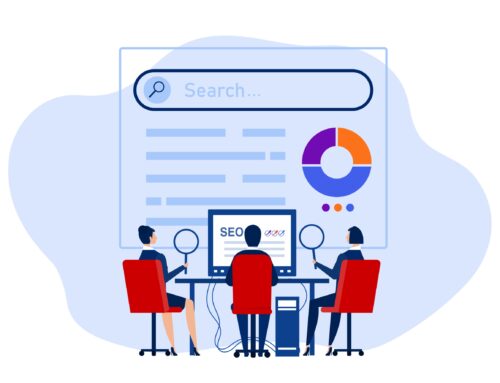Acquiring new customers is crucial for growth and sustainability. Whether you’re a startup trying to carve out a niche or an established company looking to expand, understanding effective customer acquisition strategies can be a game-changer.
This guide aims to demystify the process by providing practical insights and actionable tips that cater to businesses of all sizes. From leveraging social media platforms to optimizing your website for conversions, we’ll cover the essential tools and techniques you need to attract and retain customers.
Discover how you can elevate your brand and secure a loyal customer base.
Understanding Your Target Audience
Before you can successfully acquire new customers, it’s essential to understand who your ideal customer is. Profiling your target audience allows you to tailor your marketing strategies effectively.
Key Considerations
Demographics:
- Age
- Gender
- Location
- Income level
Psychographics:
- Interests
- Lifestyle
- Values
Behavioral Segments:
- Buying habits
- Product usage
- Brand loyalty
Different Customer Acquisition Channels for Small Businesses
Online Channels
SEO (Search Engine Optimization)
SEO is the backbone of online customer acquisition. By optimizing your website with relevant keywords and quality content, you can increase visibility on search engines, driving organic traffic to your site. Remember, SEO is not a one-time fix but an ongoing process that requires continual adaptation and improvement.
Content Marketing
Content marketing involves creating valuable and relevant content to attract and engage your audience. Whether it’s through blog posts, videos, or infographics, providing informative content can establish your authority in the industry and nurture potential leads through the sales funnel.
Social Media
Platforms like Facebook, Instagram, and LinkedIn offer powerful tools for reaching your audience. Use social media to share content, engage with your audience, and promote your products or services. Each platform has its unique strengths, so tailor your strategies to fit each one’s characteristics.
Email Marketing
Email marketing remains one of the most effective channels for customer acquisition. By sending targeted and personalized emails, you can nurture leads, build relationships, and drive conversions. Ensure your emails provide value, whether through informative newsletters or exclusive offers.
PPC (Pay-Per-Click) Advertising
PPC advertising, including Google Ads and social media ads, allows you to reach a vast audience quickly. With PPC, you can target specific demographics and interests, maximizing your chances of engaging potential customers. Keep an eye on your budget and ROI to ensure your campaigns are cost-effective.
Offline Channels
Networking Events
Attending industry conferences and local networking events can expose your business to new audiences. Not only do you meet potential customers, but you also build valuable relationships with other businesses and influencers in your sector.
Direct Mail
While digital marketing dominates, direct mail still has its place in customer acquisition. Sending well-designed flyers or brochures can capture attention in ways that digital ads can’t. Be sure to include a clear call-to-action and a compelling offer to pique interest.
Local Sponsorships
Sponsoring local events or community initiatives boosts your brand’s visibility and demonstrates your commitment to the community. Choose events that align with your brand values and target audience to maximize your impact.
Community Involvement
Engage with your local community through volunteering, hosting workshops, or participating in local fairs. By being actively involved, you create a positive image, making your business a preferred choice for locals.
Creating a Customer Acquisition Strategy
Crafting a comprehensive customer acquisition strategy is essential for any business aiming to thrive in today’s competitive landscape. Here are key components to focus on when forming your strategy:
- Set Clear Goals
Determine what you hope to achieve through your customer acquisition efforts. Whether it’s increasing sales, enhancing brand awareness, or expanding into new markets, setting clear, measurable objectives will guide your strategy.
- Define Your Unique Selling Proposition (USP)
- Identify what sets your product or service apart from competitors.
- Communicate your USP clearly and consistently across all marketing channels.
- Choose the Right Channels
Selecting the appropriate mix of online and offline channels can bolster your marketing efforts.
- Online Channels: SEO, content marketing, and social media platforms like TikTok and Snapchat are trending for engaging younger audiences.
- Offline Channels: Direct mail and community events to engage local consumers.
- Develop a Budget
Create a realistic and flexible budget that accommodates different channels and allows for adjustments based on results and changing trends.
Measuring and Analyzing Customer Acquisition Efforts
To enhance your customer acquisition strategy, it’s crucial to measure its effectiveness. Carefully analyzing your efforts not only improves your current tactics but also empowers future campaigns, ensuring sustained business growth.
1. Identify Key Performance Indicators (KPIs)
- Traffic Sources: Determine where your website visitors are coming from, such as organic search or social media.
- Conversion Rate: Track how many leads convert into paying customers.
- Customer Acquisition Cost (CAC): Calculate the expense of gaining a new customer.
2. Use Analytics Tools
Harness tools like Google Analytics to gain insights into your web traffic and user behavior. These insights can provide valuable benchmarking against industry standards, allowing for strategic adjustments.
3. Regularly Review Campaign Performance
Create a schedule for consistent evaluation of marketing campaigns. This assessment should include:
- Reviewing click-through rates (CTR)
- Examining engagement metrics like likes, shares, and comments
- Monitoring fluctuations in advertising costs
4. Gather Customer Feedback
Communicating directly with your customers can offer qualitative data:
- Send post-purchase surveys
- Conduct interviews for in-depth insights
- Create feedback forms on your website
Understanding customer satisfaction helps refine personalization strategies.
Future Trends in Customer Acquisition for Small Businesses
The landscape of customer acquisition is constantly evolving, driven by technological advancements and changing consumer behaviors. Staying ahead means being aware of emerging trends and adapting accordingly.
AI and machine learning are increasingly playing roles in customer acquisition, offering more personalized and efficient strategies. Chatbots, for example, can enhance customer service and streamline the sales process.
Additionally, the importance of data privacy and ethical marketing practices is growing. Customers are more conscious of how their data is used, and businesses must prioritize transparency and trust-building.
Are you ready to supercharge your customer acquisition strategy?
Customer acquisition is a dynamic and essential component of business growth, especially for small businesses. By understanding your audience, utilizing diverse acquisition channels, and continually analyzing your efforts, you can build a solid foundation for long-term success.
Take the insights and strategies from this guide, and start refining your customer acquisition approach today.
Remember, the key to success lies in adaptation and persistence. If you’re looking for further resources or personalized advice, consider joining our newsletter or scheduling a consultation with our experts.
Phoenix Web Design Studio is a leading web development company in Phoenix, AZ, specializing in creating custom websites that drive results. Whether you need a sleek design, responsive functionality, or tailored solutions to grow your business, we’ve got you covered. Get a free quote today and let us help take your online presence to the next level!






